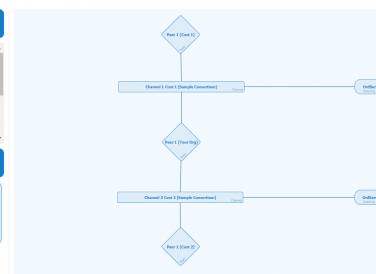
AKB use case: building a blockchain network for document sharing
A few days ago the first demo video of AstraKode Blockchain was published on AstraKode’s YouTube channel. The video showcases…
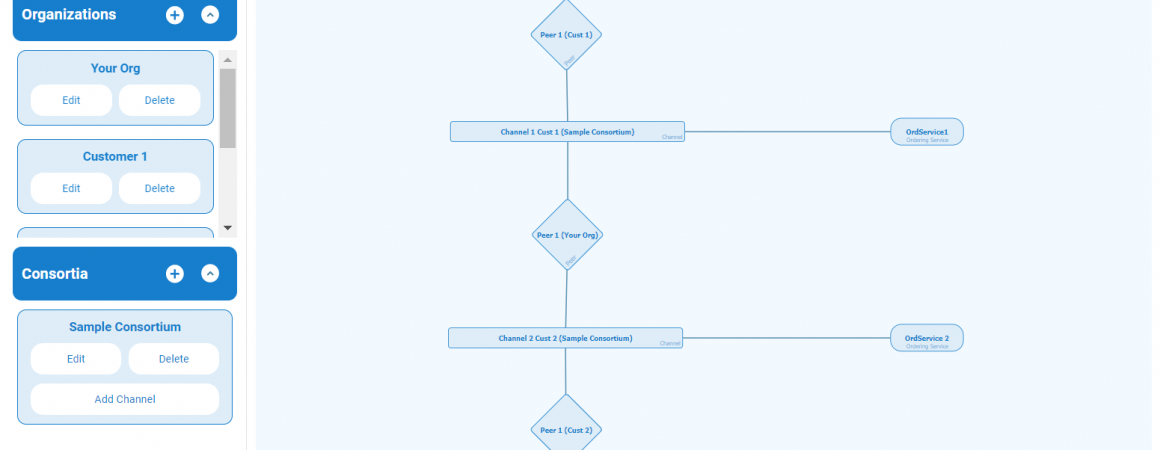
A few days ago the first demo video of AstraKode Blockchain was published on AstraKode’s YouTube channel. The video showcases AKB’s Network Composer, the visual development environment with which you can easily (and fastly) design and configure a Hyperledger Fabric blockchain network.
The realization of the video was not motivated by the need to simply show the functionality, as well as the potential, offered by the platform at a general level, but it was inspired by a real, specific and successful use case, commissioned to us last year. The goal is to share with all the users who want to try AKB a taste of what is possible to realize concretely through the Network Composer.

The company we’re talking about is Systema srl, an Italian company that for over 20 years has been offering IT consulting and software development services, supporting numerous companies working in various sectors, in particular manufacturing, architecture and civil engineering. Among the various areas of consulting there is that of document management, related, in particular, to projects in BIM (Building Information Modeling), offering a system through which you can upload, share and download all documents and information related to a project.
This is a company whose business is B2B, therefore characterized by a relatively small number of customers, represented exclusively by companies. The goal, which is increasingly common nowadays, is to add an extra layer of security in the management of such documents, which only blockchain technology is able to do. How? By adding to the system a private blockchain network able on the one hand to support encryption of the information, and on the other hand to make them only visible to the customer to whom they belong.
Before designing a blockchain network, it is necessary to fully understand the needs that stimulate its implementation. In our case, to recap, we are dealing with a company:
These three elements represent the fit on which we have designed and “tailor-made” a specific blockchain solution. The nature of the company’s transactions (B2B) and the consequent lack of need to expand the network on a large scale encouraged us to act at a modular level. Within the Hyperledger Fabric architecture, this translates into the attribution of a single channel to each customer, in which the customer herself and Systema srl participate. This way, communication is isolated and visible only to those who provide the service and to the single recipient of the same.
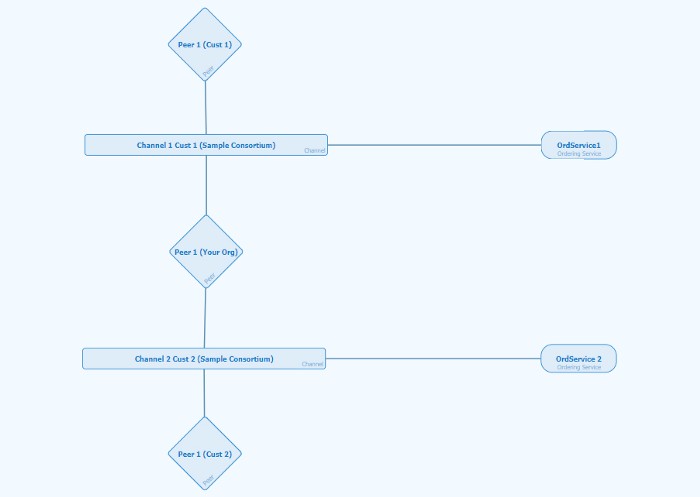
The screenshot above shows a snapshot of the network, assuming the company is only managing two clients. You can see that each is associated with a channel and a peer. You can also notice how Systema’s peer is connected to both channels. This works fine in this example, however for performance and redundancy reasons it is recommended that the provider org should have extra peers for a higher number of clients (and thus channels).
All the steps taken to configure this use case are contained in the demo video “How to build a blockchain network for document sharing with AKB”.
The first version of AstraKode Blockchain, named Moon, was launched on 31/12/2020. With Network Composer, currently, it is possible to design and configure one or more blockchain networks, and in the coming update it will also be possible to generate their “source code” (ETA Q1 2022).
Note that as the use case under consideration was not originally developed with AKB, its realization was quite an arduous undertaking. It took several months, a lot and a lot of hard work ridden with trial and error processes due to a general lack of documentation and to the ample and complex technology stack involved. This need was one of the reasons that encouraged us to develop AstraKode Blockchain.
In the video, lasting a few minutes, we have reproduced the same use case examined in this article (only with a few channels less to save a few minutes and make it less repetitive), demonstrating how incisive the combination of low-code + blockchain can be, in terms of greater simplicity and speed in creating and configuring a network, and consequently lower costs at the enterprise level.
For more information we recommend you to consult “AstraKode Blockchain, the new intuitive and customizable blockchain platform”.
We are very proud of our experience with Systema and to have helped improve their tools through the integration of blockchain technology.
Here is a brief comment from the company:
“The support offered by AstraKode has allowed us to integrate in our BIMSp@ce Framework the countless functionalities of a Private Blockchain. In fact, we have integrated the management of the Building Information Modelling process with this technology, giving shape to our LockChain, a very sophisticated tool that allows us to secrecy the documents related to the BIM process, making them not only private, but also absolutely secure as they are encrypted. The spirit of innovation and avant-garde in the field of everything related to digital, brings Systema S.r.l. and AstraKode to explore increasingly challenging territories and forge partnerships in search of the best solutions available to respond to a constantly evolving market”.
Costantino Manes — Digital Project Manager Systema S.r.l.
We would like to remind you once again that the use case dealt with here is extremely specific and, consequently, designed to correspond to the needs and intrinsic characteristics of the company in question. We invite you to come and try the platform for free by visiting AstraKode.tech. See you soon, AstraKoder!

A few days ago the first demo video of AstraKode Blockchain was published on AstraKode’s YouTube channel. The video showcases…
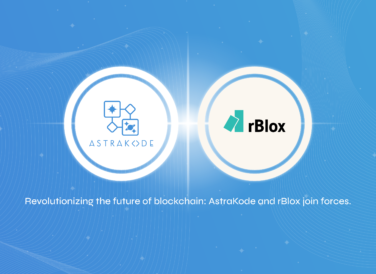
AstraKode is pleased to announce a new collaboration with rBlox aimed to make the adoption…
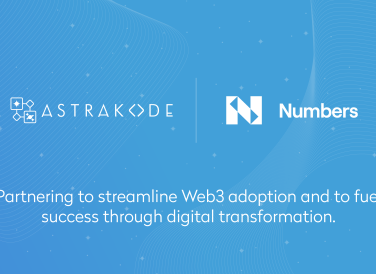
A new partnership is born AstraKode and Numbers Protocol are excited to announce a strategic…